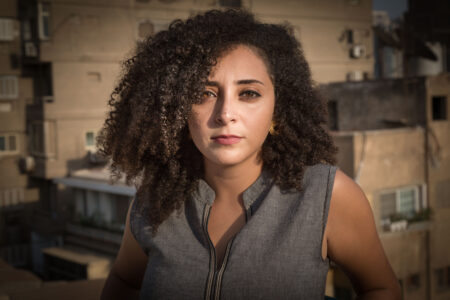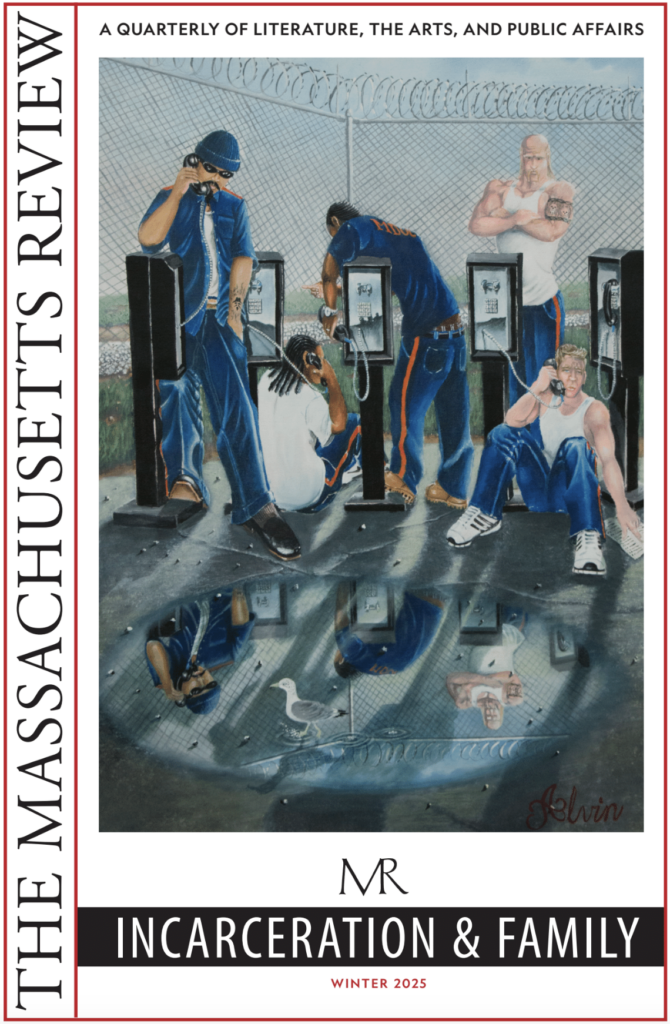10 Questions for Sara Elkamel

Ever since my mother stopped reading my poems
I have searched for death in the eyes of my friends
As if I had been lodged in a fable
That insulates me from dying suddenly, and without reckoning.
—Translated from Rana al-Tonsi’s “27,” Volume 66, Issue 1 (Spring 2025)
Tell us about one of the first pieces you translated.
One of the first things I translated wasn’t a poem—it was excerpts from In the Footsteps of Enayat al-Zayyat, a work of creative nonfiction by one of my favorite poets, Iman Mersal. The book is a gripping, genre-defying investigation into the life and death of a forgotten Egyptian novelist, but it also becomes a record of Mersal’s own restlessness—her insistence on archival, her long nights, her open heart. I translated a few passages into English shortly after the book came out in Arabic, as a way of carrying them with me, holding them closer. (I was in New York at the time; one copy had made it across from Cairo, and so we were all passing it around.)
That moment in the book when Mersal, after years of searching, finds Enayat’s grave and falls asleep in the necropolis refused to let me go. The scene felt mythic, intimate, and I guess mostly uncanny. The image of a writer reaching through time and death to cradle another made me want to put myself into the frame.
These early translations eventually led to the poem “In the Footsteps of Enayat al-Zayyat.” In the poem’s triptych form, the italicized text on the left has been loosely translated from Mersal’s account of her excavation of Al-Zayyat’s brief life. The italicized text on the right draws, again loosely, from Mersal’s excerpts of Al-Zayyat’s diaries. And the center column becomes a space for my own restlessness, my attempt to exist alongside them—as a third woman writer moving across estrangement, despair, and silence.
What writer(s) or works have influenced the way you write now?
Too many to name! I really don’t think I would be the same writer I am without the reading that shaped my eyes and language. Very early on, reading Anne Carson gave me the courage to experiment with forms that opened up what poetry can mean—her book Plainwater in particular has been a kind of sustenance. I take it with me everywhere. It’s where I learned that if you unmoor language just enough, you can let something holy through.
Reading Carl Phillips, a master of syntax, showed me that words on the page can enact, can perform, the mind in motion—in all its conflict and vulnerability, doubt and hesitation.
Terrance Hayes taught me that a word can be more than just a word—it can be a note in a score, a dream, wind in a box. His lyric magically expands what a line can carry—emotionally, politically, and musically. Reading him reminds me that the poem is a body with breath and pulse; that you never just read with your eyes.
And Etel Adnan’s In the Heart of the Heart of Another Country is a work I feel so lucky to have encountered. It is so generous in its pursuit of self-portraiture, and a reminder that beauty is to be found in ants and fingernails as in oceans.
What drew you to write a translation of this piece in particular?
I’ve been a little obsessed with Rana al-Tonsi’s work ever since, about five years ago, I came across Sinan Antoon’s translation of her poems in Banipal. There was something immediately disarming and heartbreaking about her voice—the longing, the obsession with death, the fluency in surrealism. I eventually found my way to A Rose for the Last Days, the collection in which “27” and “32” appear.
These two poems struck me with their dream logic, their vulnerability, the way they seem to change with every reading—like kaleidoscopes. I felt I couldn’t “pin them down” so much as accompany them into English—to preserve their movement, their multiple truths, their risk. Rana’s work feels like it’s always on the verge of rupture, or transformation, and that tension is something I wanted to honor in translation.
Is there a city or place, real or imagined, that influences your writing?
Cairo is at the root of most of the work I write, I think—its dust, its excess, its decapitated trees. But my writing is also shaped by other geographies, most of which feel almost mythic to me: the desert landscapes of Sinai and Wadi Rum; the stillness of Lake Qarun in Fayoum; the Nile Delta village where my father grew up. Such places stretch my perception—of scale, of solitude, of my own body.
Is there any specific music that aids you through the writing or editing process?
The only music I can listen to as I write is Anouar Brahem, specifically his “The Astounding Eyes of Rita” or the album “Le Pas Du Chat Noir.” Otherwise, silence is my favorite sound. Anything else—lyrics, a neighbor’s cough through the wall, the washing machine’s final spin—pulls me out of language.
Do you have any rituals or traditions that you do in order to write?
I usually drink coffee as I write, which means I’m often annoyed at how quickly a cup ends. I like to have several poetry books open at once on my desk—and I keep re-reading lines I love as though they were little engines. I always begin in a notebook, almost never on a screen, with my favorite 0.5 black ink pen.
Who typically gets the first read of your work?
It keeps changing, depending on the project and the stage I’m in. But my friend—and incredible poet—Hannah Matheson is probably the person I’d trust most with my first drafts. She reads with such care and discernment, and always seems to know what the poem is trying to do or be, sometimes even before I have decided myself.
If you could work in another art form what would it be?
Lately I’ve been really curious about two very different art forms—ceramics and film.
What are you working on currently?
I’m currently working on a book-length translation of Enter World by the Palestinian poet and playwright Dalia Taha. It’s been an incredible challenge and privilege to live inside her language, which always moves between self-inquiry and political urgency with grace and openness. I’m also putting the finishing touches on my own poetry manuscript.
What are you reading right now?
I’m currently reading and loving Terrance Hayes’s So to Speak, and rereading Victoria Chang’s The Trees Witness Everything—a book I return to often for its gutting beauty and its perfect balance of precision and chaos. In fiction, I’m reading Either/Or by Elif Batuman, right after finishing The Idiot.
SARA ELKAMEL is a poet, journalist and translator based in Cairo. She holds an MA in arts journalism from Columbia University and an MFA in poetry from New York University. She is the author of the chapbook “Field of No Justice” (African Poetry Book Fund & Akashic Books).



